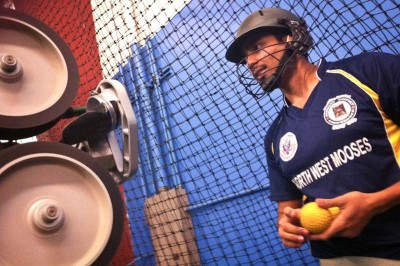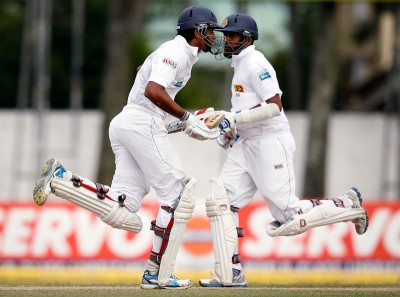
Behind a complex of warehouses in Woodinville, in a fluorescent-lit sports complex laid with AstroTurf and strung with netting, there’s a batsman stepping up to the pitch.
I’m at late-night cricket practice for The Moose, the traveling team of The Microsoft Cricket Club. It’s 9:00 on a work night but nobody’s going home anytime soon — they’ve got a national tournament in Florida to prepare for.
“Make sure you’re behind the net,” warns Vishwa Gaddamanugu, the gum-chewing coach. I’m standing alongside the automated pitching machine listening to the rhythm of pop, crack, thump as Gaddamanugu feeds ball after yellow dimpled ball into the machine to meet Vik Kothari’s long paddle-shaped bat.
I’m glad I heeded the warning a few moments later when a ball rings off the metal edge of the cage an inch right of my ear.
It is football season and I’ve made a promise to my Seahawks-loving husband to “really try and get into football” this year.
But after accidentally — it was an accident! — wearing Jets colors to my first Hawks game, which just happened to be against the Jets, and suffering through last weekend’s heartbreak against the Dolphins, I needed a timeout.
I’ve traveled and worked in India and Pakistan and so I’ve spent a lot of time weaving my way through games of street cricket. In South Asia, cricket is the sport that gathers people around TVs and draws kids with bats in hand out to the alleys after school.

“Cricket is the second most popular spectator sport in the world,” says Samarth Shah, a member of the Microsoft Cricket Club and former player of the US National Cricket Team.
I always assumed the game had no followers in the U.S. But Shah can rattle off cricket clubs from Florida to Philly and estimates there are as many as 30,000 cricket players in the country.
Over a hundred of them are members of the Microsoft Cricket Club, formed in 1995 primarily by immigrants from cricket-loving countries who came for jobs at the software company.
Seventeen years later, they’re good and getting better. The Moose (unfortunately misprinted as “The Mooses” on their jerseys) were runners up in a national tournament in Chicago this September.
The Seattle area recently produced three players for the U.S. team — two of them from the Microsoft Cricket Club. Shah, who is one of those players, says that has earned Seattle a reputation as an “overachiever” on the national scene.
It’s also a big enough deal to attract employees. Both Shah and Gaddamanugu say they know of people that have sought out jobs at Microsoft because of the vibrant cricket scene. Gaddamanugu says that some hiring managers even ask about cricket skills during interviews (But, honestly, only if the candidate is already right for the job).

Lunch breaks during the summer at the Redmond campus find fields so crowded with cricket players that Gaddamanugu says, “It looks like India.”
Outside of Microsoft, cricket has a long way to go in the popularity department.
Its reputation, when it has one, is of a long and complicated game.
Games can last as long as five days. Though Gaddamanugu is quick to reassure me that the matches played at Marymoor and Magnuson parks during the spring and summer are of the shorter variety — 6 ½ hours, not including the lunch break. But Shah thinks that Americans are unfairly prejudiced against the game.
He points out that even cricket die-hards tune in and out of matches. Though he complains that it’s difficult to do when so few American sports channels show the game.
“If you can spare a half-hour for bass fishing or rodeo,” he says chuckling, “you can spare a little time for [cricket].”
Despite the hardships, the Microsoft Cricket Club has big ambitions. Gaddamanugu has made it a personal goal to bring a national tournament to Seattle by next year.

There are challenges, specifically finding the right venue. For example, it’s difficult to get public parks to cut their grass to cricket’s stringent regulations.
Still, there is a sense among the players that cricket has a real future in these parts.
In the meantime, the Microsoft Cricket Club would like to invite you to its next game. It plays every weekend starting in spring.
“Apart for the cricket, if you get bored you can go grab a sandwich or go for a jog. And don’t be afraid to ask any questions,” says Shah. “There’s no harm in even pausing a game and asking a question … it’s slow enough as it is.”
Sounds pretty nice on this rainy November day. Maybe I’ll see you there.

